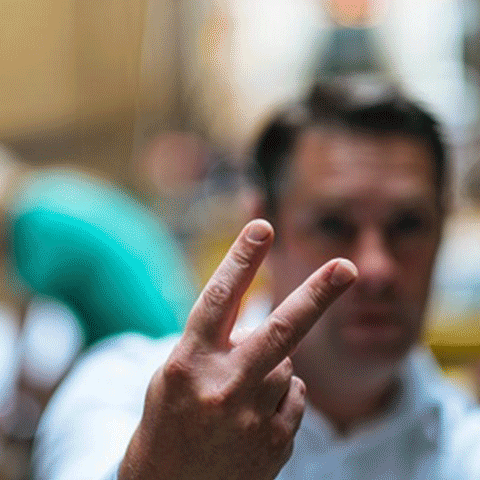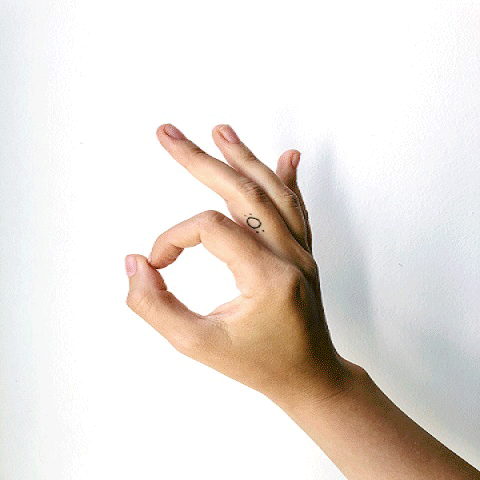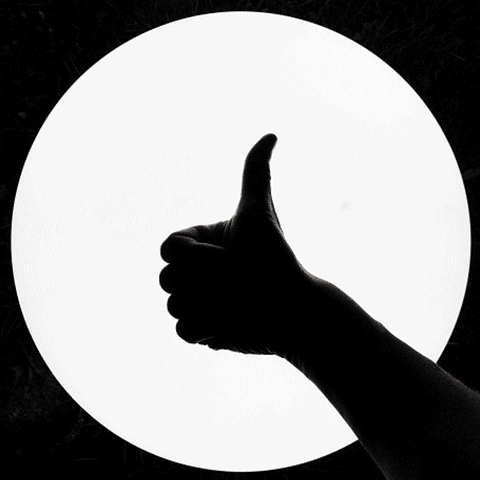Gestures have been a part of human communication for centuries. From simple hand signals to complex body language, gestures have helped us convey meaning and express emotions without words. But what if these classical gestures were transformed into neon signs?
The peace sign
Also known as the "V for Victory" or "Victory Hand" gesture, it is made by holding up the index and middle fingers in a "V" shape. It was popularized during World War II by British Prime Minister Winston Churchill as a symbol of victory over Nazi Germany. Churchill would often make the gesture in public appearances and speeches to boost morale and show support for the war effort. The V-sign was also used as a symbol of resistance by the French resistance and other occupied countries. After the war, the gesture became a symbol of peace and victory. Anti-war and anti-establishment activists also used it to symbolize peace and unity. It's still widely used as a symbol of victory, peace, and resistance to oppression and is often seen at political rallies and protests.

The peace sign quickly gained popularity as a symbol of anti-war and civil rights movements during the 1960s and 1970s. It became a symbol of peace and anti-establishment and was commonly used in protests and demonstrations. The peace sign was also used as a logo for various peace organizations and movements, and it was often seen on buttons, posters, and other forms of protest art.
Today, the peace sign remains an iconic symbol of peace and is still widely used as a symbol of hope, love, and unity. It is still used in anti-war campaigns, human rights movements, and other social and political causes, and it continues to be a popular symbol in art and fashion.
The "OK" sign
It is a gesture connecting the thumb and index finger in a circle while keeping the other fingers straight. It is commonly used as a symbol of approval or agreement. However, in recent years, white supremacists have also adopted the gesture as a symbol of white power. This has led to controversy and confusion over the appropriateness of using gestures in certain contexts. It's important to be aware of the multiple meanings of gestures and symbols and to use them in appropriate ways to avoid offense or confusion.

The "thumbs-up"
The "thumbs-up" sign is a gesture in which the thumb and index finger are extended upward, while the other fingers are curled into the palm. It is commonly used as a symbol of approval, agreement, or support. The origins of the thumbs-up gesture are not entirely clear, but it is believed to have its roots in ancient Rome, where it was used as a symbol of agreement or approval in the gladiatorial arenas. The thumbs-up gesture is also used in many different cultures and is widely recognized as a positive sign. However, it's important to note that the thumbs-up may have different connotations or meanings in different cultures.

The "rock on" hand gesture
The "rock on" hand gesture is a symbol of support or enthusiasm for rock music and culture. It is made by holding the index and pinky fingers in the air, while tucking the middle and ring fingers into the palm and holding the thumb out.

It is also known as the "rock and roll" or "metal horns" gesture. The origins of the rock on gesture are not entirely clear, but it is believed to have been popularized by rock musicians in the 1970s, specifically by the band Coven in the song "One Tin Soldier" and Dio, who used this hand gesture on stage. The gesture was then adopted by fans and other musicians in the rock and metal scene. This gesture is also used in other cultures it could have different meanings like in India it is considered an auspicious symbol.
The "shaka" sign
Residents of Hawaii use the shaka to convey the "Aloha Spirit", a concept of friendship, understanding, compassion, and solidarity among the various ethnic cultures that reside in Hawaii, lacking a direct semantic to literal translation. Drivers will often use it on the road to communicate distant greetings along with gratitude.

In California, the shaka sign may be referred to as "hang loose" or "hang ten", both associated with surfer culture.
In coastal Brazil, the shaka sign, known as the "hang loose" (also derived from an eponymous clothing brand, which uses the shaka as a logo), is a common gesture; Ronaldinho usually celebrated the goals he scored by giving the crowd a double shaka. It is also associated with the Brazilian jiu-jitsu community internationally.
Chinese "six" gesture: The sign has some similarities to the Chinese number gesture for "six".
Beverages: The sign can also be used to indicate the imbibing of a bottled drink, either alcoholic or non-alcoholic, as attested to below, by placing the thumb to the mouth and motioning the little finger upward as if tipping up a bottle's bottom end. A similar meaning can be achieved by pressing the thumb up against the tip of the nose with the little finger raised upwards parallel to the bridge of the nose. It is referred to as "schooies" in Australia (Australian slang for a schooner)
Telecommunications
"Call me" gesture
With the thumb held near the ear and the little finger pointed at the mouth, the gesture is commonly understood to mean "call me", as it resembles the handset of a traditional landline telephone.
In 2021 it was reported that the gesture was declining among younger Americans, who favored placing a hand flat against their face, in a manner resembling a smartphone.
Smoking
In Australia and Russia raising the thumb to the mouth while pointing the little finger to the air is seen as an invitation for one to smoke marijuana, the posture resembling the use of a pipe.[citation needed] Similarly in New Zealand, this gesture symbolizes smoking a "P" (methamphetamine) pipe, as well as variations of the shaka sign being the recognized gang salute for the Mongrel Mob.
Do you want to hang a “Gesture” in your home now?



Share:
Personalized Neon Signs-How to Make a Neon Sign for Your Business?
Wedding Neon Sign: Why So Popular?